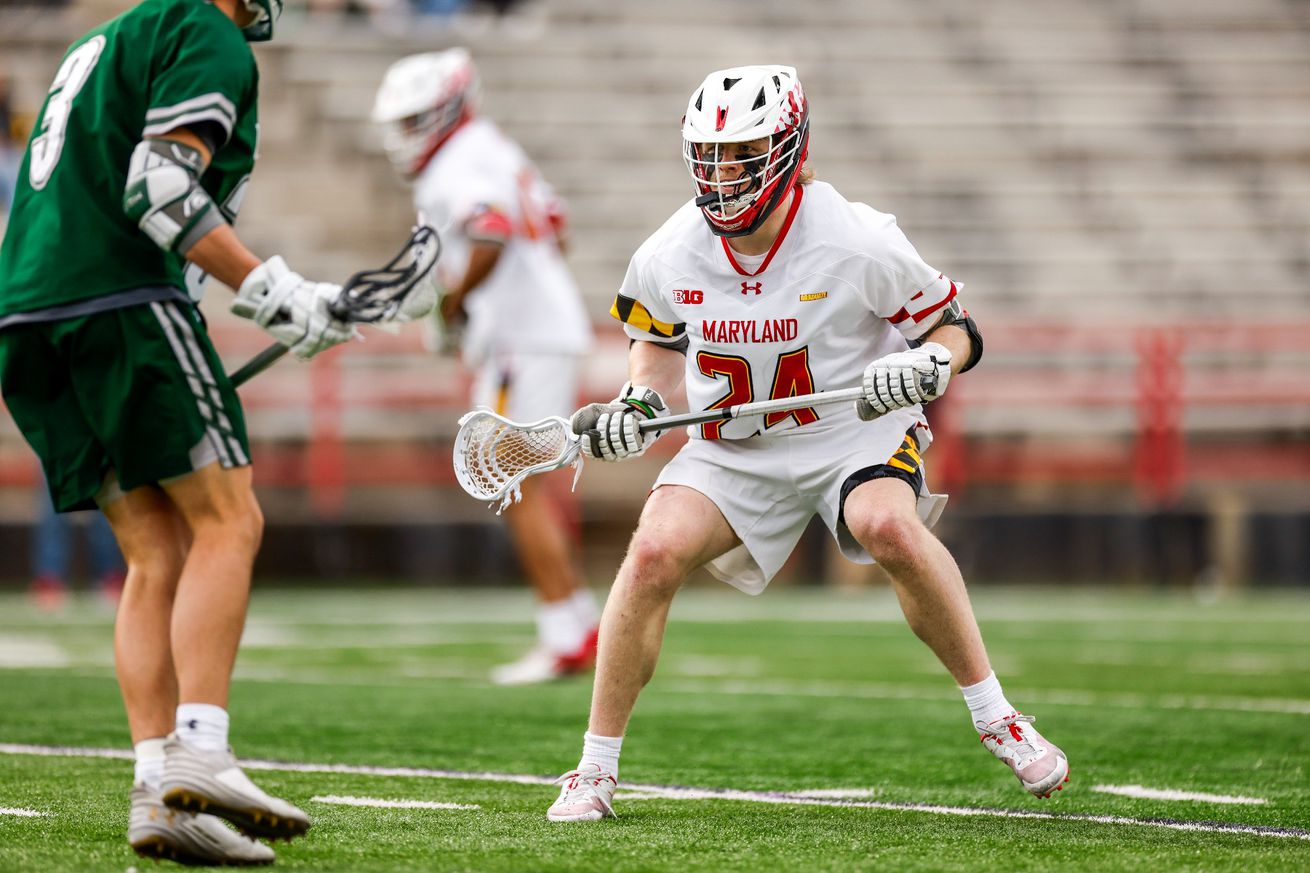
Maryland’s “rope unit” is full of adaptable players embracing their unglamorous yet vital roles.
In the two seasons since Tewaaraton Award winner Logan Wisnauskas left, much has been made of Maryland men’s lacrosse’s lack of a true star. But Maryland’s coaches and players will tell you they don’t need one to compete for championships.
The Terps embrace a team-first mentality: everyone does their job and wins will come. No unit better exemplifies this than their short-stick defensive midfielders.
“We’re just essentially a gear in the machine that is Maryland lacrosse,” sophomore George Stamos said, “and our goal is to win.”
Defensive midfield is the least glamorous position on the lacrosse field — not flashy but vital nonetheless.
“The short sticks are so important. It’s like having good corners in football,” head coach John Tillman said. “You always need support, but if you don’t need to support them quite as much it makes everyone else’s job a lot easier.”
At the high school level, the position is often played by a team’s best athletes that don’t have much experience with the stick, since they are still capable of staying in front of attackmen and midfielders with speed and strength.
At the Big Ten level, though, things change. Everyone has to be extremely skilled. Tillman rarely recruits a player to play short-stick midfield, so the position group is usually composed of converts from other positions.
This year, Maryland’s four primary defensive midfielders are Stamos, Colin Sharkey, Nick Redd and Eric Kolar. In high school, Redd and Stamos played close defense and long-stick midfield, while Kolar and Sharkey were offensive-minded midfielders. Stamos was such a transition threat that he became his high school’s all-time leader in points.
“Something Maryland has prided themselves on for a long time is having those unselfish guys — guys who are willing to do anything for the team,” Tillman said. “The versatility piece is huge in recruiting.”
Redd was asked to make the transition from close defense to short-stick defensive midfield last spring, and Stamos transitioned during fall practice this past offseason. Both said the biggest change was how often they found themselves getting targeted for dodges, with opponents picking on them to try and find an avenue to the net.
“You don’t have the extra three feet of stick, so you have to move your feet a little bit more,” Stamos said.
But the group has embraced the challenge, using it as a rallying point.
“All of us have really taken up the mentality of ‘I might get dodged a lot but that doesn’t mean I’m going to get beat,’” Redd said. “I might be out there tired a lot but that doesn’t mean I am going to give up anything easy.”
Stamos credited the older members of the group, like Redd and Sharkey, for instilling a family atmosphere among defensive midfielders. But they haven’t been the group’s only leaders. All the defensive midfielders, young and old alike, draw inspiration from graduate student Josh Coffman.
In high school, Coffman was an all-state midfielder for Maryland powerhouse Severna Park. But like many others, he was asked to switch to defensive midfield. By his junior year, Coffman was one of the most productive defensive midfielders on the team, causing five turnovers and scooping 23 ground balls in 2021. He even recorded a transition goal in the national championship game against Virginia.
An injury forced Coffman to miss all of the 2022 and 2023 seasons, to which Redd credits his move to defensive midfield. This year, Coffman has finally made his way back to the field but is playing more sparingly. Still, his impact is felt. Stamos and Redd both said he has been instrumental in helping them make the switch, offering advice and watching film with them.
“It’s just easy to get behind a guy like that,” Stamos said. “He does a great job of just spreading his knowledge just because he has played here for so long.”
The group has not just impressed those within the program, but also drawn praise from opposing coaches. After Maryland’s loss to Virginia on March 16, Cavaliers head coach Lars Tiffany credited Maryland’s defensive midfielders for throwing a wrench in his team’s offense.
“We weren’t winning a lot of our matchups against their short-stick defensive midfielders,” Tiffany said.
Tiffany went on to explain that he told Griffin Schutz — who ended up scoring four times — to attack his close defender instead of midfielders.
Sometimes, Maryland’s defensive midfielders get their moment in the sun. The position is vital to helping the team clear successfully, always a point of emphasis for Tillman.
And every once in a while, clears result in a fast break, allowing defense-oriented players a chance to let a shot rip. Stamos has scored twice this season, including a game-winner at Syracuse, and Redd scored during Maryland’s comeback victory over Penn State last weekend.
The goals drew big celebrations from the bench, with the Terps happy to see teammates usually flying under the radar get their moment. For the defensive midfielders though, receiving praise and accolades isn’t a concern.
“We really could not care less about that stuff,” Redd said. “It’s about the team. We just want to win games.”
